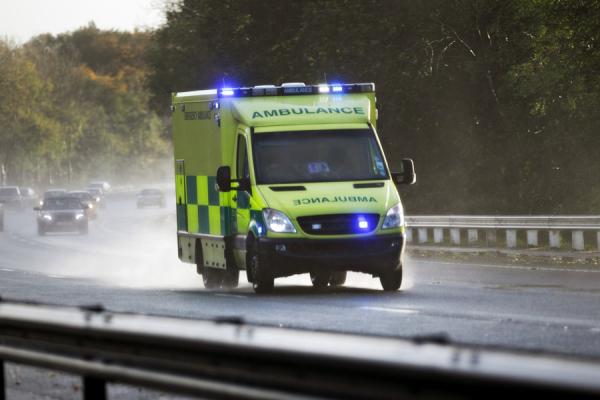Ambulance services consistently failing to achieve response time targets

GMB, the union for ambulance staff, has analysed new data that shows ambulance services across the South East, East and London are consistently failing to achieve vital targets set for response times.
For the year to August 2016 Red 1 emergency calls in East of England, those involving life threatening respiratory or heart issues, were responded to within 8 minutes only 66.9% of the time. In London the figure was 68.7%, South Central Ambulance area, 71.8% and in the South East Coast area, 67.8%. The last time this target was met can be found in notes to editors.
The target for Red 1 and Red 2 calls is to reach patients within 8 minutes at least 75% of the time.
For Red 2 calls, all other life threatening emergencies, only 57.6% of calls were responded to within the vital 8 minute window in the East of England Ambulance area. In London the figure was 63.3%, South Central Ambulance area, 72.2% and in the South East Coast area, 59.9%.
Set out in the table below are number of Red 1 and Red 2 calls that resulted in an emergency response arriving at an incident and the proportion that got there within 8 minutes.
| Year to August 2016 | Number of Red 1 calls resulting in an emergency response arriving at the scene of the incident | Of all Red 1 calls, proportion responded to within 8 minutes | Number of Red 2 calls resulting in an emergency response arriving at the scene of the incident | Of all Red 2 calls, proportion responded to within 8 minutes |
| South Central Ambulance Service NHS Foundation Trust | 12,685 | 71.80% | 199,072 | 72.20% |
| South East Coast Ambulance Service NHS Foundation Trust | 15,591 | 67.80% | 293,180 | 59.90% |
| East of England Ambulance Service NHS Trust | 17,288 | 66.90% | 341,302 | 57.60% |
| London Ambulance Service NHS Trust | 15,121 | 68.70% | 511,444 | 63.30% |
Paul Maloney, GMB Southern regional secretary, said “The situation is at a critical level when less than 72% of life or death emergency calls are responded to within 8 minutes. The government has created conditions which mean the public now have to wait longer for the ambulance service to respond.
High vacancy rates and staff shortages mean existing staff have to shoulder more responsibility and crews responding to 999 calls are not adequately staffed. The current leaving rate in England of 6.1% for qualified ambulance staff is outstripping the joining rate of 4.3% with the situation getting worse.
With vacancy levels at over 1,000 in the ambulance service, the Government must act fast if they want to seriously try and hit the response time targets. Jeremy Hunt is acting irresponsibly, proper investment and full recognition of skills is needed to solve the problems around the recruitment and retention of ambulance staff.”
Contact: Paul Maloney on 07801 343839 or Michelle Gordon on 07866 369259
Notes to editors
1) Definitions
Red Calls (Red 1 and 2)
These are calls that are classified as immediately life threatening and require an emergency response (with blue lights). The target is to arrive at these patients within eight minutes in 75% of cases. Examples are: Red 1: Cardiac arrest or life-threatening traumatic injuries; Red 2: Serious breathing difficulties or suspected stroke with serious symptoms.
2) Source: Monthly data is released by NHS England and available here: www.england.nhs.uk/statistics/statistical-work-areas/ambulance-quality-indicators/
3) Last time Red 1 within 8 minutes target was hit:
London, April 2014
East of England, June 2015
South Central, April 2016
South East Coast, April 2015
4) Last time Red 2 within 8 minutes target was hit:
London, March 2014
East of England, August 2012
South Central, December 2015
South East Coast, November 2014
5) In the year to 31 March 2016 there 4,435 advertised vacancies (full-time equivalents) in Ambulance Services.



